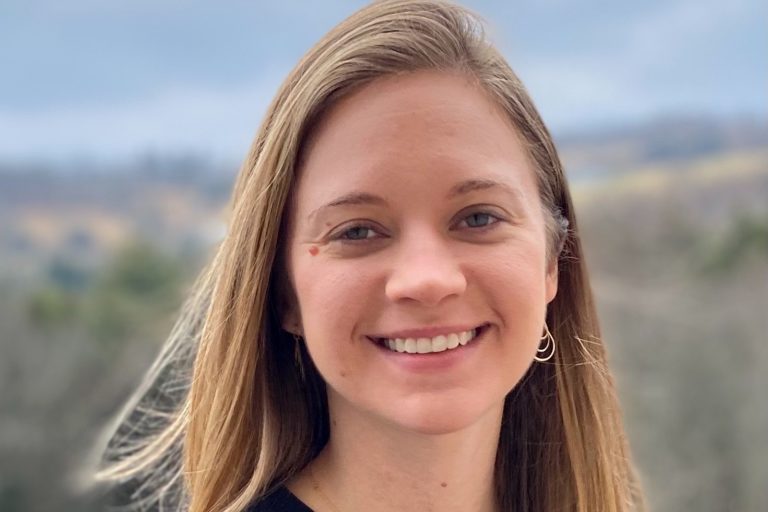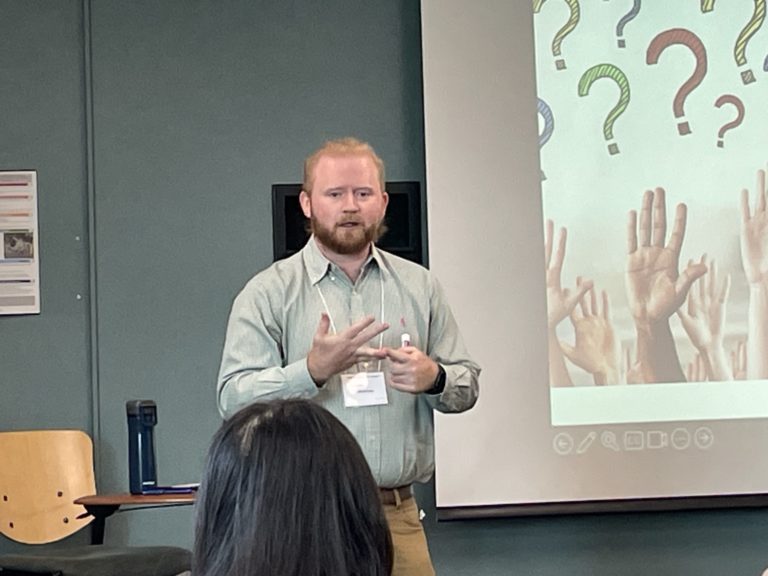Assistant Professor of Arabic Ayman Mohamed was recently recognized for his work in redesigning his Elementary Arabic course with an AT&T Excellence in Teaching with Technology Award.

When COVID-19 forced all university courses online, Dr. Mohamed used it as an opportunity adaptable to the virtual environment and flexible to be switched to other modalities. He used the OER platform Pressbooks through the Open Educational Resources Program at the MSU library to create open textbooks in collaboration with Dr. Sadam Issa. Additional tools used for the course included OneNote, which was used to collect assignments, quizzes and exams, and Mediaspace, which was used to create grammar videos as well as recording the class zoom sessions for students’ access.
Dr. Mohamed saw another opportunity as he redesigned his class, and created it with inclusivity in mind from the beginning. His choice of technology focused on fulfilling the following main features in the course: free access, engagement, enhanced feedback, sustainability, and adaptability. For example, the online book material is enriched with interactive learning tools utilizing self-check H5P modules, which enhance students’ self-study experience.
As MSU’s Arabic classes have moved back in person, Dr. Mohamed is embracing a hybrid modality with a flipped communicative approach because he has seen how it has benefited students and allows them more flexibility. For example, through an integration of D2L and Teams, a class notebook was generated on the OneNote app. Each student gets access to a notebook for this specific class which allows multiple modalities of submissions that can be audio, text, or images. They can either upload images of their submission or use the stylus or keyboard to write directly on the screen. Submissions get synced immediately and the teacher can add feedback on the same submission using either text, stylus, or audio.
In general, the use of technology in this course was meant to enhance the approach of delivery so that it can be adapted for different modalities, serve diverse learners and consider factors of accessibility and inclusiveness. Dr. Mohamed’s vision was not only to respond to the pedagogical emergency but to set the model and learn from others to expand it to other less commonly taught languages.
In thinking about his course, Dr. Mohamed said: “I believe that equity, diversity, and inclusion in the classroom is critical for academic success. With the ever-changing world around us, it is our mission to ensure that we provide up-to-date learning experiences to our students to equip them with vision and empower them to function as creative global citizens.”
Dr. Mohamed’s plans for the future revolve around creating educational videos that include the diversity of Arabic speakers around the world, including immigrant communities of Arabic origin who have created their own identities.
To find out more about Dr. Ayman’s Arabic classes, watch this video that shows his course in depth:


